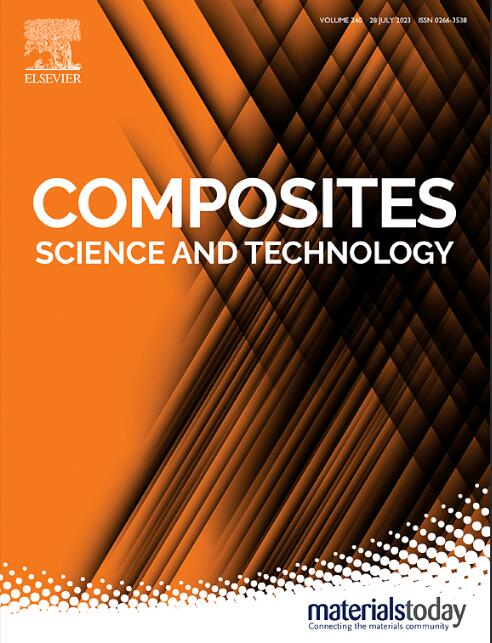基于微纳结构的可再生超疏水防污复合硅树脂
IF 8.3
1区 材料科学
Q1 MATERIALS SCIENCE, COMPOSITES
引用次数: 0
摘要
硅基超疏水涂料的发展是防污应用的迫切需要。然而,实现耐用涂层仍然具有挑战性。超疏水性往往在机械损伤或微生物渗透后丧失,从而影响静电防污能力。在此,我们提出了一种基于新型硅烷端粒(F-PIBO)和α,ω-二羟基聚二甲基硅氧烷(PDMS)之间的简单缩合反应制备有机硅涂层(F-PIBO- 40%)的简单策略。此外,纳米级二氧化硅颗粒(SiO2)均匀掺入,形成微纳粗糙结构,提高耐久性。对其机械和环境耐久性、自洁性、抗菌性和抗硅藻性进行了全面表征。结果表明,即使经过400次损伤循环(8000 cm磨损),接触角仍保持在165°以上。超疏水表面可以通过摩擦简单地更新,从而最大限度地降低使用和更换的成本。此外,该涂层在暴露于紫外线辐射、热/冷温度循环以及浸泡在各种极性和非极性溶剂中后仍保持其超疏水性。异龙脑基的协同作用和超疏水性使其具有优异的自清洁、抗菌和抗硅藻性能。我们相信这项工作为制备多环境可靠、耐用和表面可再生的超疏水防污涂料提供了新的途径。本文章由计算机程序翻译,如有差异,请以英文原文为准。

Renewable superhydrophobic antifouling composite silicone based on micro-nano structure
The development of silicone-based superhydrophobic coatings is highly desirable for antifouling applications. However, achieving durable coatings remains challenging. Superhydrophobicity is often lost after mechanical damage or microorganism penetration, which compromises the static antifouling ability. Herein, we propose a straightforward strategy for fabricating a silicone coating (F-PIBO-40 %) based on a simple condensation reaction between a novel silane telomer (F-PIBO) and α,ω-dihydroxypolydimethylsiloxane (PDMS). Moreover, nano-sized silica particles (SiO2) were uniformly incorporated to construct micro-nano rough structures and enhance the durability. The mechanical and environmental durability, self-cleaning, antibacterial and anti-diatom performance were comprehensively characterized. The results revealed that even after 400 damage cycles (8000 cm of wear), the contact angle remained above 165°. The superhydrophobic surface could be simply renewed through friction, minimizing the cost of use and replacement. Furthermore, the coating retained its superhydrophobic properties after exposure to UV radiation, hot/cold temperature cycling, and immersion in various polar and non-polar solvents. The synergistic effects of the isobornyl groups and the superhydrophobicity contributed to the excellent self-cleaning, antibacterial, and anti-diatom performance. We believe that this work provides a new approach for the preparation of multi-environmentally reliable, durable, and surface-renewable superhydrophobic antifouling coatings.
求助全文
通过发布文献求助,成功后即可免费获取论文全文。
去求助
来源期刊

Composites Science and Technology
工程技术-材料科学:复合
CiteScore
16.20
自引率
9.90%
发文量
611
审稿时长
33 days
期刊介绍:
Composites Science and Technology publishes refereed original articles on the fundamental and applied science of engineering composites. The focus of this journal is on polymeric matrix composites with reinforcements/fillers ranging from nano- to macro-scale. CSTE encourages manuscripts reporting unique, innovative contributions to the physics, chemistry, materials science and applied mechanics aspects of advanced composites.
Besides traditional fiber reinforced composites, novel composites with significant potential for engineering applications are encouraged.
 求助内容:
求助内容: 应助结果提醒方式:
应助结果提醒方式:


